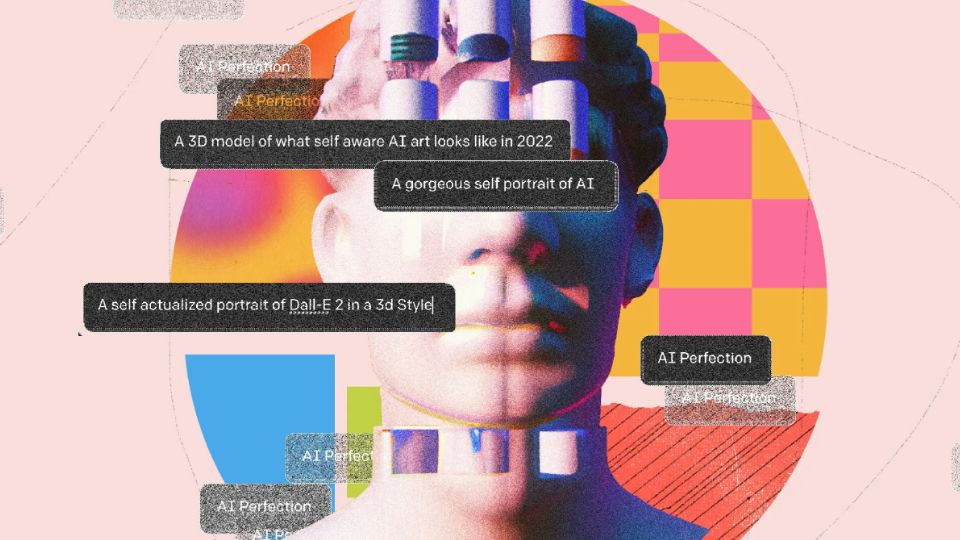
Embracing AI as a Collaborative Partner: Shaping the Future of Content Creation
In the world of AI, there’s a common misconception that it can replace human creativity. However, let’s break free from such misconceptions and explore the true power of collaboration between human intelligence and AI. This article delves into the fascinating world of content creation, revealing how no two individuals, especially those unfamiliar with prompting, will generate identical outcomes with the same instructions. We unlock a world of possibilities by treating AI tools like ChatGPT as powerful allies rather than creative substitutes.
Creativity thrives on diversity, as everyone brings unique experiences, cultural influences, and cognitive processes to the table. Consider the birth of Apple’s Lisa in 1982, where the design team’s intuition played a pivotal role. Originally labelling the command execution button as “DO IT” to maintain a professional tone, they swiftly realised the need for a different approach. Observing people’s reactions, they discovered that a simple “OK” button resonated better, reflecting the casual agreement commonly associated with computing. This early example illustrates how human intuition and understanding shape the interaction between humans and machines.
Prompting is the key to harnessing AI’s potential, requiring human intelligence to generate effective instructions and guide AI systems’ output. AI platforms like ChatGPT act as empowering collaborators, enriching human creativity with their responsive suggestions. The development of voice recognition technology, such as Siri and Google Assistant, is a prime example. Meticulous crafting of prompts and extensive AI training allowed engineers and researchers to create advanced voice recognition systems capable of accurately interpreting user commands, nuances, and contextual cues. This highlights the indispensable role of human guidance in driving significant technological advancements.
By acknowledging that individuals interpret and approach tasks differently, even with the same prompt, we celebrate the driving force of innovation. This diversity ensures that content creation remains a vibrant, ever-evolving field. Embracing AI as a collaborative tool empowers us to expand the horizons of human expression rather than stifling it. AI becomes a catalyst, enabling individuals to explore uncharted avenues and push the boundaries of creativity to unprecedented heights. This belief is shared by computer scientist, Jaron Lanier, who states, “I don’t like the term ‘A.I.’ In fact, I think it’s misleading—maybe even a little dangerous.” Lanier believes that thinking of A.I. as a tool rather than a creature is the most pragmatic position, as mythologising the technology limits our imaginations and hampers effective operation. He suggests that the most accurate way to understand what we are building today is as an innovative form of social collaboration.
Reflecting on our past embrace of AI tools is invaluable. Initially, concerns arose when spell check and synonym suggestions were introduced, with some questioning the authenticity of the resulting work. However, time has shown us the transformative power of these tools as they became indispensable aids, refining and elevating our written expression. Similarly, AI platforms like ChatGPT, generative fill on Photoshop, and programs like Midjourney serve as modern counterparts, offering suggestions, fostering brainstorming, and enhancing the editing process. These AI tools have become integral to businesses, amplifying creativity while preserving the essence of human expression.
Recognising AI’s potential is vital for businesses thriving in the content creation landscape. Rather than fearing job displacement, businesses should encourage their teams to embrace AI as creative partners. Leveraging AI tools brings enhanced productivity, improved quality, and fresh perspectives to the forefront. This collaboration unlocks new levels of creativity, fuels innovation, and delivers exceptional content that resonates with audiences. The widespread hesitancy towards AI and these powerful tools as content writing aids is regressive and stifles progress. It’s essential to understand that AI thrives on the partnership with human intelligence, and opting out of this collaboration is a conspiracy not worth following.




